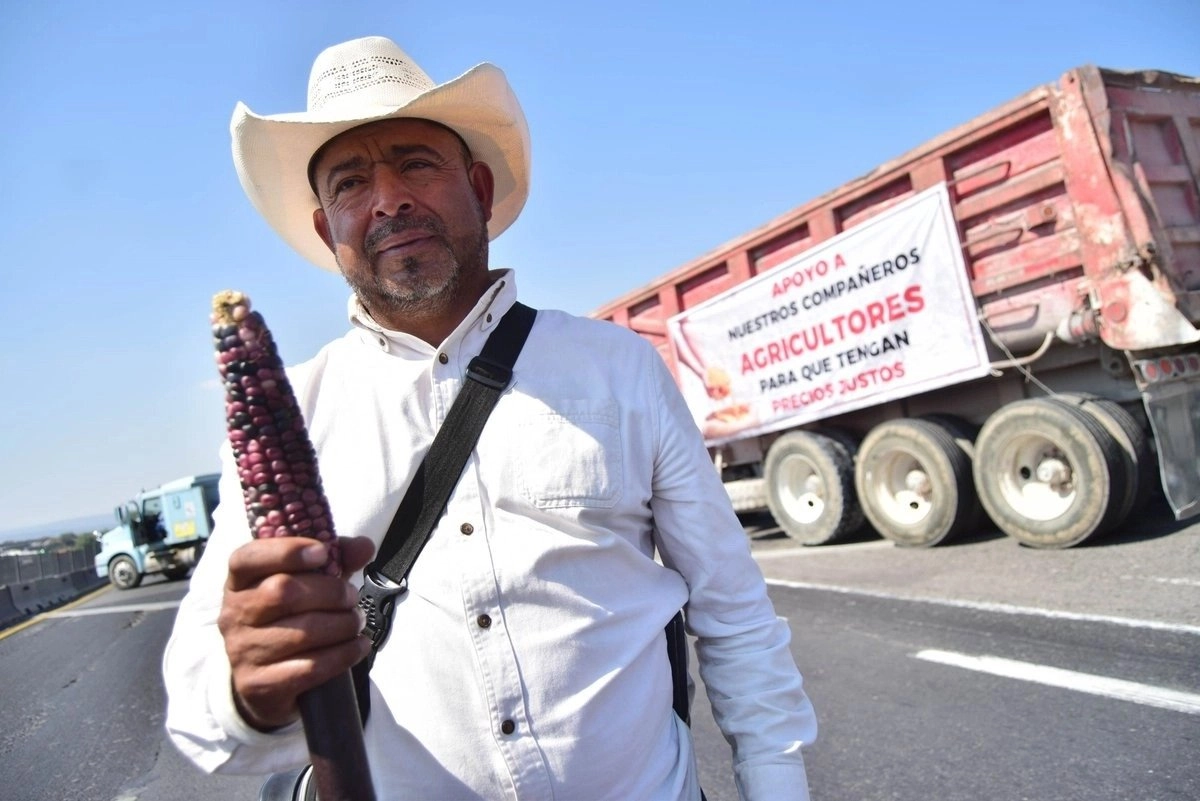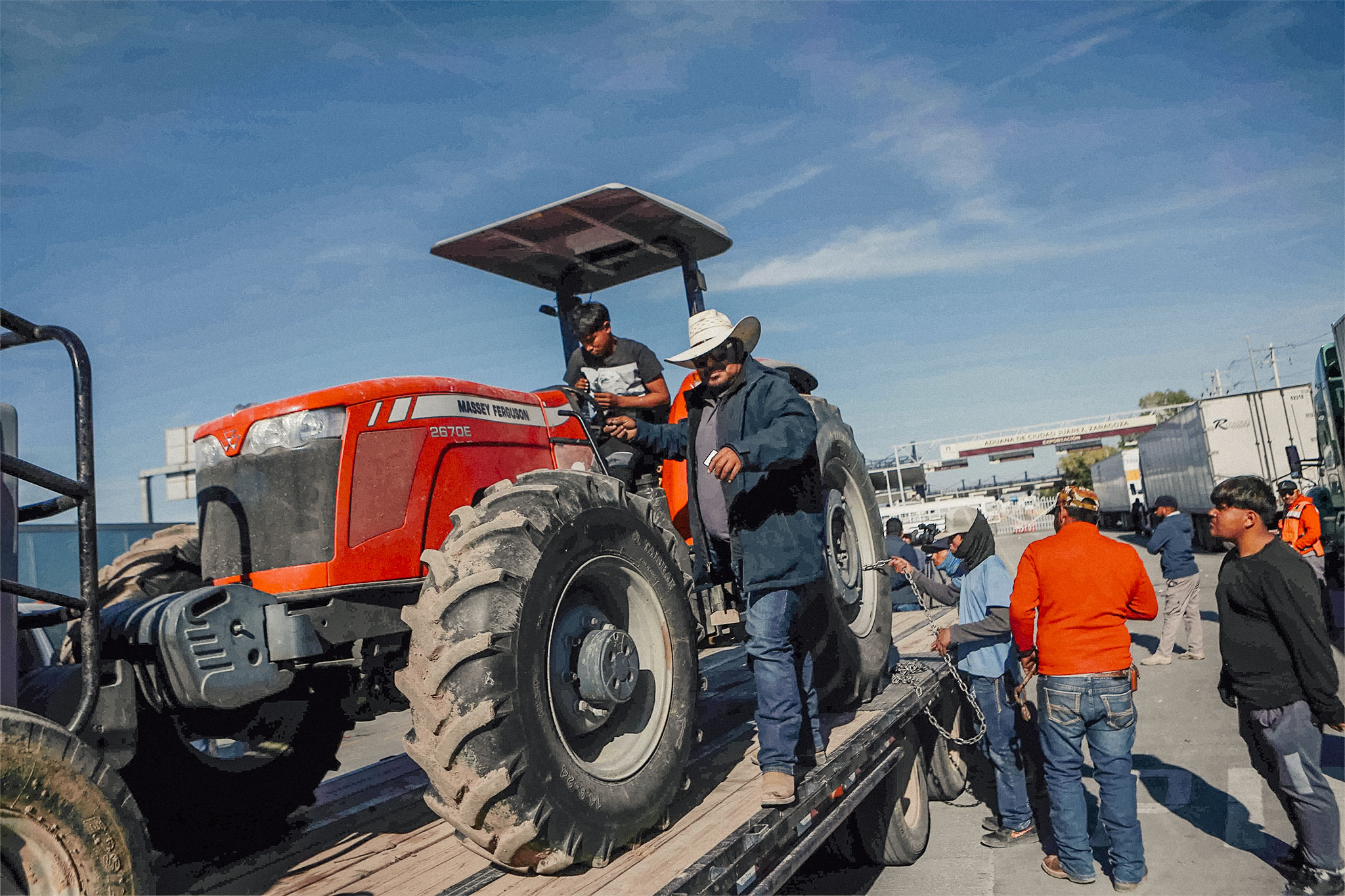Mexico’s Agricultural Crisis & Transnational Corporations
This editorial by Ana de Ita was originally published in the November 27, 2025 edition of La Jornada, Mexico’s premier left wing daily newspaper. The views expressed in this article are the author’s own and do not necessarily reflect those of Mexico Solidarity Media, or the Mexico Solidarity Project.
Since mid-October, peasant mobilizations have resurfaced in various states and regions across the country. On November 24th, the National Front for the Rescue of the Countryside, the Peasant Agricultural Movement, and the National Association of Transporters brought traffic to a standstill on several highways, seized or opened toll booths, even closing the Ciudad Juárez customs office and disrupting traffic in 17 states. These actions demonstrated their discontent with the agricultural policies of the so-called Fourth Transformation.
Without any evaluation of the outcome of the destruction of agricultural institutions and policies carried out by the government of Andrés Manuel López Obrador, which caused the fall in production and profitability, as well as the increase in imports and the price of tortillas, the current government intends to continue them to the detriment of the farmers and peasants who produce for the domestic market.
Those who mobilized are the commercial grain producers, who contribute more than 60 percent of the national corn production, 46 percent of the bean production, 92 percent of the wheat production and 73 percent of the sorghum production, and are the ones who feed the population of the cities.
The government’s response is the same as that given by various parties in power in the past to those who express disagreement with their actions: trying to divide and delegitimize the movements and their leaders, inventing obscure political interests, but not examining the real causes that force the peasants to leave their plots and demonstrate in the public streets.
For the past seven years, financing for planting staple crops has been unavailable because the government eliminated the institutions that operated as development banks. Commercial farmers lack the necessary resources for planting and therefore depend on short-term loans. Commercial banks offer credit at very high interest rates and demand conditions and guarantees that these farmers cannot meet. There is also no crop insurance against natural disasters.
It also eliminated marketing programs that provided producers with some certainty and prevented companies from arbitrarily lowering prices. Subsidized price hedges existed to guarantee a minimum price for producers, even though international prices were used as a benchmark. Target prices regulated the price paid to producers, and when the market offered a lower price, the government covered the difference. Contract farming also existed, providing some certainty for both producers and buyers from the start of the planting season.

In addition to destroying this institutional framework, the government restricted subsidies only to self-consumption producers with less than 20 hectares of rainfed land and 5 hectares of irrigated land.
The results were not immediate, as during the first years of the previous administration, favorable international prices allowed the market itself to provide profitability for producers. But starting in 2023, the situation changed, and the government had to support farmers with emergency measures.
Production results also demonstrated the error of the policy of leaving commercial producers without any subsidies in the open market. In 2024, fall-winter production fell by 3.7 million tons, primarily in Sinaloa. Spring-summer production also decreased by nearly 400,000 tons, and in 2025, fall-winter corn production fell by 4.7 million tons compared to 2023, which will place total 2025 production at levels similar to the low levels of 2024. For this reason, farmers are demanding a comprehensive agricultural policy, developed jointly by the government and farmers’ organizations, that will allow them to recover the production and profitability of staple grains.
Currently, grain prices on the Chicago Board of Trade have fallen, and due to the trade war between the United States and China, Mexico has become one of the largest buyers of its neighbor’s crops. Corn imports through September totaled 18.1 million tons, of which 820,000 tons were white corn.
Mexican farmers in the open market must compete with grains at depressed international prices, without subsidies or institutions to guarantee them a minimum profit for their work. Therefore, another of their demands is to remove basic grains from the USMCA in the upcoming renegotiation.
The truth is, farmers are sounding the alarm. National agriculture is in crisis, and if the government doesn’t respond, the food supply for Mexicans will be left in the hands of multinational corporations.
Ana de Ita is the Director of the Center for Studies for Change in the Mexican Countryside (CECCAM).
-
Grupo Salinas Must Pay 51 Billion Tax Bill in January
Woes are multiplying for the ultra-right winger Ricardo Salinas Pliego, who won’t have much to celebrate despite being a guest at US President Trump’s recent Christmas dinner.
-
People’s Mañanera December 19
President Sheinbaum’s daily press conference, with comments on poverty reduction, USMCA, Asia trade dialogue, social rights, Grupo Salinas tax debt, and Acapulco revival.
-
Culture | Labor | News Briefs
Clara Brugada: Zarco Not Dismissed at Railway Workers Museum
Mexico City’s head of government announced the locomotive mechanic, trade unionist, communist and founder the Railroad Workers Museum will receive a tribute in May.




